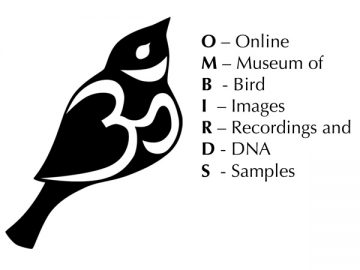This August, the Cowan Tetrapod Collection Curator and Assistant Curator unveiled a new avian blood bank collections protocol developed at the Beaty Biodiversity Museum. The OMBIRDS acronym stands for Online Museum of Bird Images, Recordings, and DNA Samples. Traditionally, museums only archive blood and tissue samples for whole-body specimens in their collections. However, many research projects use catch-and-release methods because of logistical, ethical, or permitting constraints. Furthermore, catch-and-release can enable better answers to questions that depend on tracking individuals over time (behavior, migratory return rates, ecological interactions, etc.). Typically the catch-and-release approach results in the collection of blood and/or feather samples for genetic and/or isotope analysis, plus occurrence metadata, morphological measurements, photographs, and perhaps sound recordings or videos. Click here to see OMBIRDS records first hand.

Maja Irwin helps her father Darren Irwin (Curator of Tetrapods) and Ildiko Szabo (Assistant Curator of Tetrapods) at the AOU poster session in Chicago. Photo taken by Arlene Koziol.

Derek Tan, the Media Specialist at the Beaty Biodiversity Museum created the fantastic OMBIRDS Logo and contributed the design of the poster. The first syllable “OM” is derived from the first syllable of the Sanskrit mantra Om Mani Padme Hum. Om is the symbol for wisdom in some cultures.
OMBIRDS is a single data-entry protocol which results in the creation of a media voucher. It consolidates the metadata and morphological data with existing digital files obtained from temporarily caught birds into a single database record. The OMBIRDS team, Ildiko Szabo, Stephanie Cavaghan, Grant Hurley and Darren Irwin, hope this protocol will benefit individual researchers by making it easier to access and utilize their own data by consolidating all information regarding genetic material, sound recordings, photographs, and occurrence data into one database. They also hope that the entire avian research community benefits from the archiving and advertisement of genetic, behavioral, and morphological data of these media vouchered blood samples on the web. The utilization of DarwinCore terms facilitates data file transmission of media voucher files to VertNet (a multi-museum specimen search engine) and the Macaulay Library of Natural Sound at Cornell University.
